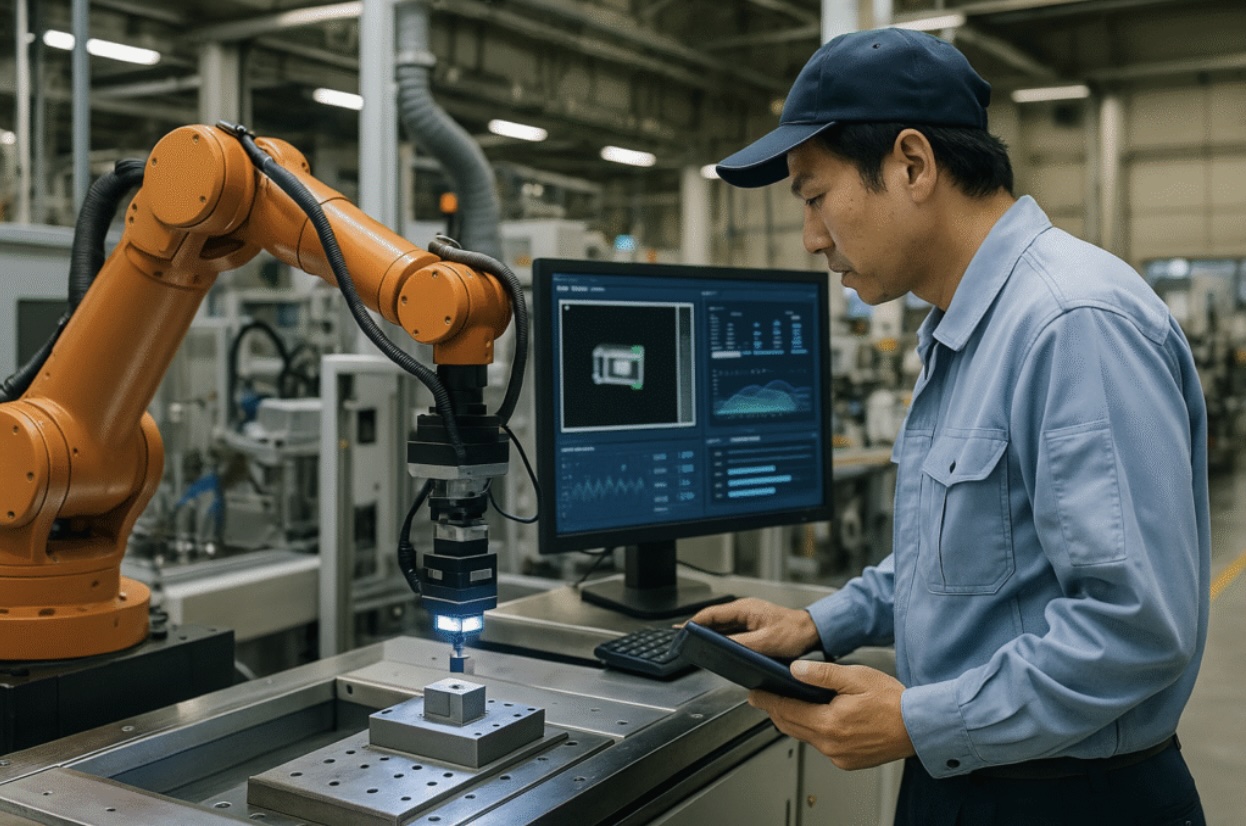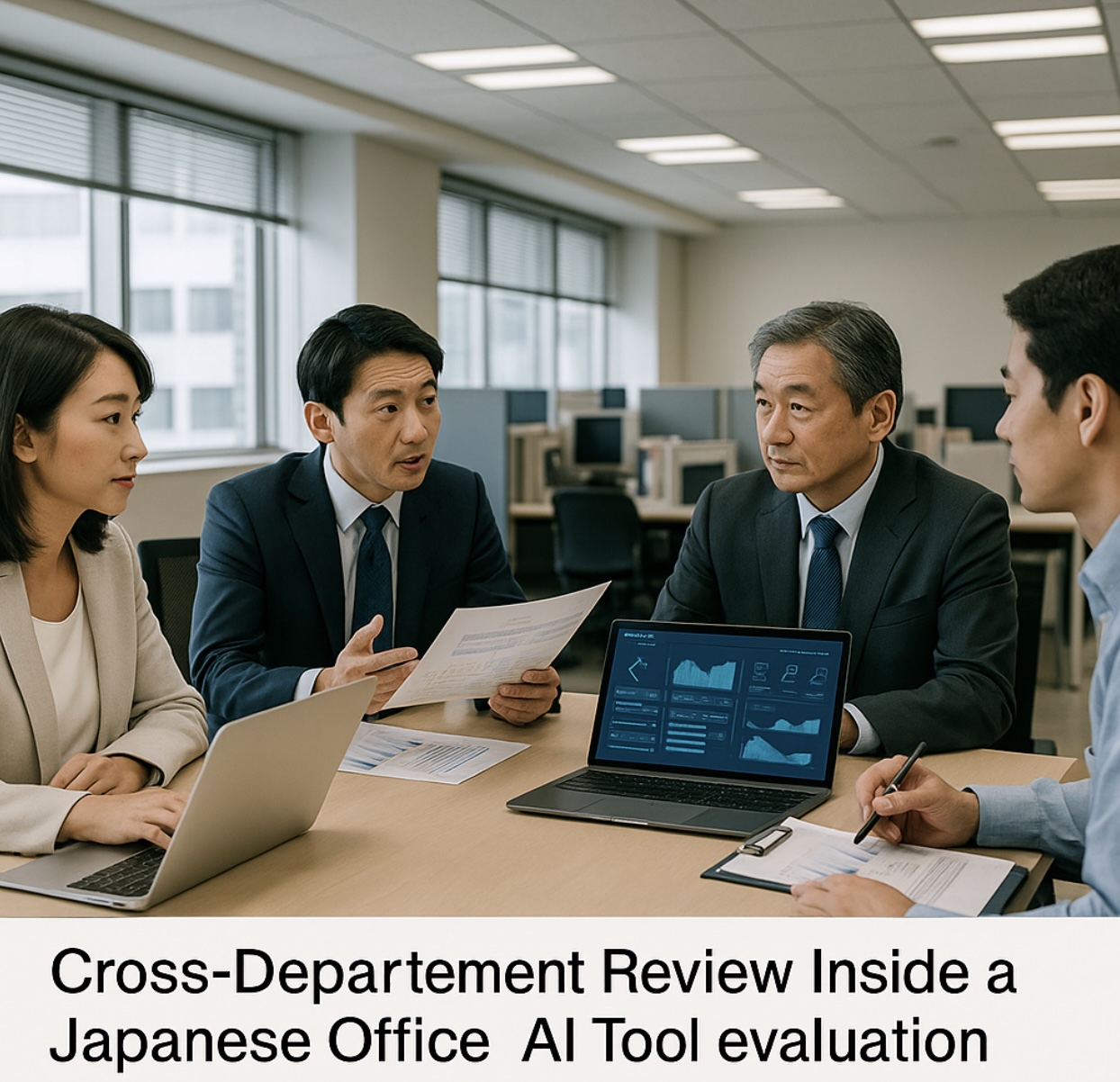Nov 26 (News On Japan) - Japan is often perceived internationally as adopting Al cautiously rather than rapidly. Yet 2025 is starting to show a different reality.

Why Japan’s AI Moment Is Different—and Why 2025 Finally Matters
In factories, banks, logistics centers, and retail headquarters, companies are beginning to explore AI with more intent—not through trend-chasing, but through careful, measurable evaluation.
The push comes from familiar pressures: a rapidly aging population, a shrinking workforce, and persistent productivity demands. At the same time, the technology itself has matured. Newer language and vision models are more reliable and better at handling Japanese-language tasks, making them easier to test in real business settings.
Japan’s adoption curve remains steady rather than dramatic, but it is now following a more measured trajectory. And once you look at how companies test these tools, the pace begins to make more sense.
Japan’s Real AI Data: What the Numbers Actually Show in 2025
The popular idea that Japan is “behind” in AI only captures part of the picture. Recent surveys from industry associations in Japan show that many large enterprises have already experimented with generative AI in some form—sometimes isolated to a single team, sometimes across multiple departments.
Manufacturers are trying AI for visual inspection and production optimization. Banks are testing automated summaries for dense documentation. Logistics firms are experimenting with forecasting models, while retailers are gauging how AI performs during busy sales periods.
The common thread is not rapid rollout, but the style of adoption:
- Tools are tested through structured pilot programs
- Performance on Japanese-language tasks is non-negotiable
- Companies judge tools against real operational data
- Stability under edge-case scenarios matters more than novelty
- Decisions hinge on measured outcomes—not buzz or pressure to keep up
Japanese firms monitor AI industry trends and data, but filter those trends through the realities of local workflows and expectations. As tools improve, this measured approach is closing the gap with early-adopting countries in a sustainable way.
How Japanese Companies Evaluate AI Tools in Practice
Inside Japanese organizations, evaluation follows a familiar rhythm—one influenced by the country’s long-standing Proof of Concept (PoC) culture. Instead of rolling out a tool quickly and adjusting later, teams ask a straightforward question: Will this actually make our work better?
Most assessments revolve around four points:
1. Can the tool stay accurate when used on real data?
AI is tested on real documents, customer inquiries, images, or production datasets to confirm that accuracy holds up outside demo environments.
2. Is it reliable during high-pressure situations?
Models are run through peak-hour loads, multilingual requests, and imperfect inputs to see how they behave when things get busy or messy.
3. Does it understand Japanese nuances and tone?
Keigo, mixed kanji-kana writing, and subtle shifts in politeness can trip up global models. This part of testing is essential, especially for customer-facing use cases.
4. Does it produce measurable value?
Instead of theoretical ROI, teams look for real improvements—less time spent, fewer errors, smoother workflows. Many teams rely on hands-on AI product evaluations and run trials inside the exact processes the tool is meant to support.
This evaluation-first mindset may extend development timelines, but it dramatically reduces the chance of failed deployments. It also results in AI adoption that actually sticks.
How AI Is Tested Across Different Japanese Industries
Japan’s approach becomes even clearer when you look at specific sectors.
Manufacturing: AI Must Survive the Factory Floor
Manufacturers test AI vision systems directly on active production lines—from Aichi’s automotive plants to Osaka’s precision factories. Changing lighting, vibration, and dust reveal weaknesses that polished demo videos never show. If a tool can’t adapt to the production environment, it’s quickly ruled out.
Finance & Insurance: Compliance Comes First

Banks and insurers compare AI-generated summaries with human versions of contracts and disclosures. Even small misinterpretations can lead to delays in adoption. Clarity, traceability, and consistency matter more than speed or creativity.
Retail: Tone and Cultural Fit Matter as Much as Accuracy
Retailers feed chatbots years of real customer interactions—emoji, mixed English-Japanese messages, typos, seasonal phrases—to test whether the AI understands context and responds in a way that feels natural to Japanese customers. Tone can make or break trust.
Logistics: Testing Under the Toughest Conditions
Logistics firms evaluate tools using data from Japan’s busiest and most unpredictable periods—New Year holidays, Golden Week, and even typhoon disruptions. A model that performs well under these conditions earns serious consideration for deployment.
Across all these sectors, the principle is the same:
Japan tests AI in the conditions that matter most, not in artificial or ideal settings.
Why Japan’s Evaluation Style Is Unique

Several long-established factors explain why Japan evaluates AI differently from other countries:
Cultural expectations for precision
In many industries, even minor mistakes can carry outsized consequences. Reliability isn’t a nice-to-have—it’s a requirement.
Regulatory focus on transparency and privacy
Guidance from METI and the Digital Agency encourages the adoption of systems that demonstrate fairness, clear data handling, and traceability.
A linguistic environment that demands nuance
Japanese’s layered formality levels and mixed writing systems require models to understand subtle context. Many global tools need additional fine-tuning to meet this bar.
Cross-departmental involvement
Evaluations often involve IT, legal, compliance, operations, and management. Decisions take longer but reduce organizational risk, which is especially important in regulated sectors.
Together, these elements shape an approach built around trust, precision, and durability.
The Road Ahead: What AI Adoption Will Look Like in Japan
Japan’s AI adoption is not likely to surge overnight, but the direction is clear. Over the next three to five years, several trends are expected to shape the market:
1. Pilots will turn into full deployments
Testing pipelines are maturing, and integration barriers are gradually easing.
2. AI + robotics will strengthen Japan’s industrial edge
With a strong robotics ecosystem already in place, AI-enhanced automation is set to expand across factories and logistics networks.
3. Localization will remain essential
Tools that perform well in Japanese—linguistically and culturally—will have a clear advantage.
4. Transparency will influence vendor selection
Companies will prefer tools backed by clear documentation, predictable behavior, and responsible governance.
5. Evaluation standards may move toward greater consistency
Industry groups are already exploring shared frameworks for assessing AI in Japan-specific contexts.
Japan’s AI evolution may appear gradual, but the trajectory is undeniably upward.
Conclusion: Japan’s AI Future Will Be Built on Evidence, Not Hype
Japan’s AI progress in 2025 isn’t defined by flashy announcements or sudden breakthroughs. It’s defined by steady, evidence-based adoption. Companies roll out tools only after they’ve shown real improvement, stable performance, and a good cultural and linguistic fit.
In a global AI landscape dominated by hype cycles and constant churn, Japan’s patient, evaluation-driven model offers a different lesson: sustainable innovation depends on what works in practice—not just what looks promising on paper.















